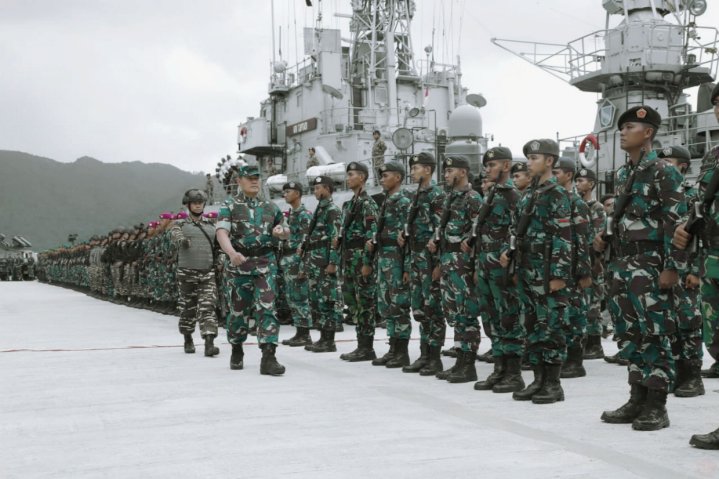
Vice-Admiral Yudo Margono, commander of the Indonesian Armed Forces Joint Regional Command I, inspecting the military line up at Great Natuna Island on 5 January. (Indonesian Armed Forces)
The Indonesian Armed Forces (Tentara Nasional Indonesia: TNI) has stood up at least 600 troops, and two more anti-submarine warfare (ASW) corvettes at Great Natuna Island, the largest of the Natuna Islands cluster in the South China Sea.
The additional warships are namely the Kapitan Pattimura (Parchim I) corvettes, KRI Teuku Umar (385) and KRI Tjiptadi (381), while the troops include personnel from the marine corps, air-defence formations, and soldiers from the Indonesian Army’s 1st Composite Battalion.
This deployment is the largest-ever conducted by the TNI both in terms of personnel numbers and equipment tonnage within the Natuna Islands cluster, the service’s information office confirmed with Jane’s on 6 January. The move is in response to what Jakarta sees as the increasing encroachment of Chinese vessels into its exclusive economic zone (EEZ) around the cluster.
In addition to the warship and troop deployments, the Indonesian Air Force has also been conducting overflights with a Boeing 737 maritime patrol aircraft from its Aviation Squadron 5 over the Natuna Islands cluster since 5 January. The surveillance flights are ongoing, and are operated from the Sultan Hasanuddin Air Base in South Sulawesi, said the TNI.
“The illegal fishing operations, which were accompanied by the foreign coast guard vessels, are a violation of Indonesia’s territorial sovereignty,” read a statement that has been prepared by the TNI’s information office, in reference to recent activities that were conducted by China Coast Guard (CCG) and fishing vessels in the South China Sea.
Looking to read the full article?
Gain unlimited access to Janes news and more...




